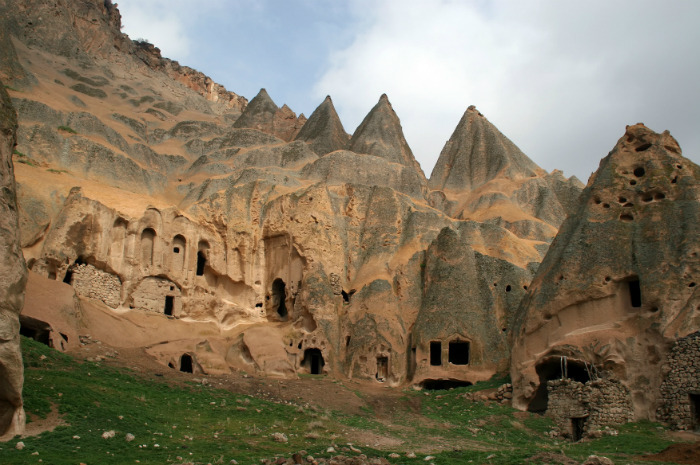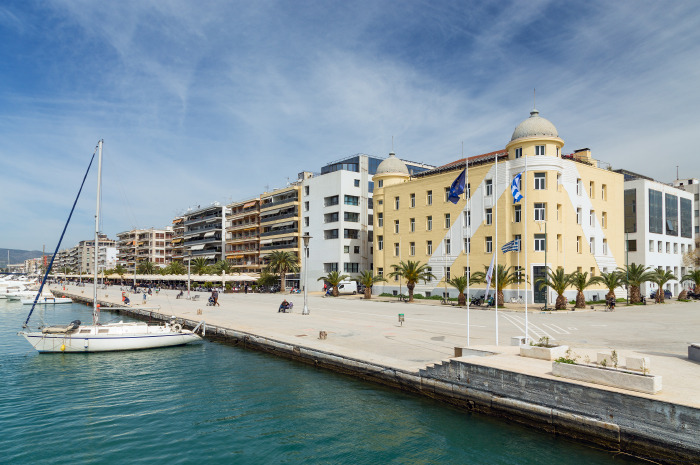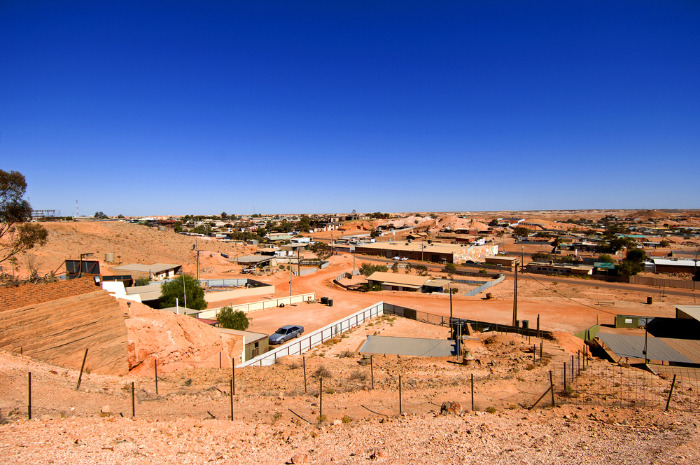Incredible Places Hidden Right Under Your Feet
Architects in modern times design buildings that reach for the stars. However, back in ancient times people were constructing downwards, creating entire cities under the surface. Sometimes such places get buried after being abandoned and Mother Nature has taken over, only to be discovered centuries later.
Many military bases are assembled underground popular cities or within mountains about which the public known nothing. Some have been decommissioned and a few photos of them have been released; other remains a public secret.
There are cities hidden right beneath your feet that are basically complex tunnels or cave systems which people have transformed over the years into livable dwellings. There are many cave hotels you can stay in all over the world.
Setenil de las Bodegas, Spain
This may be one of the most unique places you will ever visit. The 3,000 local residents live literally under a rock. The tiny town grew out of a network of caves in the cliffs above the Rio Trejo, north-west of Ronda. The blinding white houses look like they emerge from the rocks, and some have rock roofs and even olive groves on their roofs.
Pilsen Historical Underground, Czech Republic
The tour is really a lot of fun. You will go through a labyrinth of passageways, cellars and wells built below Pilsen as early as from the 14th Century. This is how you will see life of its citizens in the Middle Ages below the town and uncover the secrets of nooks and crannies that are hidden underground.
Orvieto, Italy
This medieval Umbrian city is known for the tufa outcrop, the Duomo and the Saint Patrick's Well. The ancient town center is filled with narrow streets, churches, a historic palace – and a maze of underground tunnels and caves. The network attests to the city's Etruscan roots.
Kish Underground, Iran
The resort island of Kish is a popular tourist destination. Its most famous attraction is the huge subterranean city covering an area of six square miles, constructed from its ancient underground aqueduct, or kariz. The kariz of Kish is said to have been built about 2,500 years ago, according to Ancient Origins. This structure was built to collect, purify, and store water for the inhabitants of the island, and it was essential for their survival.
Edinburgh Vaults, Edinburgh, Scotland
Also called South Bridge Vaults, they are a series of chambers formed in the 19 arches of the iconic South Bridge in Edinburgh. It was built to link the Old Town's High Street with the University buildings on the south side of the city, according to Historic UK. The city spans seven big hills. Only two of these high points are visible in the city center today – Castle Hill, atop which sits Edinburgh Castle, and Calton Hill.
The Barry Troglodyte Village, France
This is a village of caves and stone buildings built into the south side of a hill that overlooks the Rhône valley and the Donzère-Mondragon canal. The cliffs on the east side of the valley have caves and stone construction, but mostly hidden in the foliage.
Lalibela, Ethiopia
The 11 medieval monolithic cave churches of this 13th-century "New Jerusalem" are situated in a mountainous region in the heart of Ethiopia, according to UNESCO. Lalibela is a high place of Ethiopian Christianity, still today a place of pilgrimage and devotion.
Wiltshire's Cold War City, England
Burlington Bunker used to be an emergency relocations site for the British government in case there was a nuclear strike after World War Two. The site has been abandoned since the 1980s. The underground "city" was one of the ministry of defense's best kept secrets. No member of the public has ever seen inside.
Growing Underground, London, England
This is basically a farm underground. The goal is to sustainably grow mouth-wateringly fresh micro greens and salad leaves. It's possible thanks to hydroponic systems and LED technology. The crops are grown year-round in a pesticide-free environment that the forgotten tunnels provide. No weather or seasonal changes affect the produce.
Derinkuyu, Turkey
The underground city is one of five inter-connected complexes beneath the surface with a total estimated capacity of 100,000 people. Derinkuyu is the deepest in the historical Cappadocia region – about 280 feet. There are about 600 outside doors to the city, hidden in the courtyards of surface dwellings, according to Turkish Heritage Travel.
Bunker Arquitectura, Mexico City, Mexico
This is an architecture, urbanism and research office. It's actually called the Earthscraper, the antagonist of a skyscraper. The design is an inverted pyramid. The central void allows everyone in all spaces to enjoy natural light and airing.
Reso, Montreal, Canada
Locals simply call it The Underground City. There are nine connected hotels, 20 miles of tunnels, 43 indoor parking spots, 190 exterior access points, 2,000 businesses and about 500,000 people visiting a day. There is even university camps and performing arts venues.
Naours, France
The underground galleries are former quarries were used from the Middle Ages as shelter when the country was at war. The layout has been recognized as one of the largest network of tunnels in Northern France. The Underground City of Naours has the highest concentration of uncovered WW1 graffiti.
Wieliczka Salt Mine, Krakow, Poland
The mine is more than 700 years old; it is the country's oldest business venture. You can take the tourist, the miners' or the pilgrims' route. It has been a UNESCO World Heritage Site since 1978. The "Mysteries" tour is one of the hardest, physically speaking. The mine is sometimes a venue for shows, exhibitions and theatre performances. Movies have even been shot there.
Shanghai Tunnels, Portland, Oregon
The tunnels were basements of buildings that connected to other structures through brick and stone archways that were intersected with connecting tunnels under the streets, according to ShanghaiTunnels.info. They were used by crooks, called "shanghaiiers" or "white slavers," who sold women into prostitution. Men were sold as slaves to work on ships.
Underground city, Helsinki, Finland
Helsinki, Finland's capital, is building down. This is the city's solution to expansion. There is a swimming pool, a shopping area, a hockey rink (of course), parking spots and even a church. The goal is to have an underground community-development maintenance, civil defense and traffic routes that serve private and public purposes.
SubTropolis, Kansas City, Missouri
About a thousand people worked in the SubTropolis, an industrial park located in an enormous excavated mine which is as bag is 140 football fields. It opened in 1964 and lured tenants low energy costs and cheap rents, according to Bloomberg. The walls are carved out of 270-million-year-old limestone deposits and help keep humidity low and temperatures at a constant 68 degrees. Rents run about $2.25 per square foot.
Tunnels of Moose Jaw, Moose Jaw, Canada
The tunnels under the city's downtown are a year-round award-winning tourist attraction. You can get a clue of what Al Capone's bootlegging days in the Chicago were like during one tour or experience first-hand the hardships of early Chinese immigrants during another.
Seattle Underground, Washington
You may not know it but there is a lot to see under the city's Pioneer Square neighborhood. Shops, bars, and hotels from Seattle's earliest years lay abandoned below. In 1889, a fire raged through the fledgling city, razing much of the wood buildings in the business district; little survived the flames that destroyed 31 blocks, according to Atlas Obscura.
Dixia Cheng, Beijing, China
The tunnels, which are 26 feet below the ground, were a public safety measure designed to give locals the ability to flee if the Russian army had invaded China during the cold war, according to China Highlights. The tunnel network is huge – about 53 square miles. The subterranean city is also known as the "Underground Great Wall" for its vastness and military purpose.
The Paris Underground, France
The City of Lights sits above over 200 miles of tunnels. Some are even some lined to the ceiling with skulls and bones. Paris was way too overcrowded by the 17th century and the solution to overflowing cemeteries was to bury the corpses in the tunnels that have existed since the 13th century, according to Smithsonian Magazine. About 7 million bodies were moved into the catacombs.
Vlochos, Greece
Some media reports say that the 2,500-year-old lost city of Vlochos was discovered about a year ago, but archeologists working on the Vlochos Archaeological Project (VLAP) say the city, which is 190 miles north of Athens, has been known for more than 200 years. Remains of towers, walls and city gates on the summit and slopes of the hill were uncovered. Experts have also found ancient pottery and coins dating back to 500 BC.
Coober Pedy, Australia
The mining town is one of the most unique places in all of Australia. It's often referred to as the country's underground town because 80 percent of the people live as a subterranean community, largely to stay out of the summer's 120-degree temperatures. The town is one of the hottest places on Earth.



















